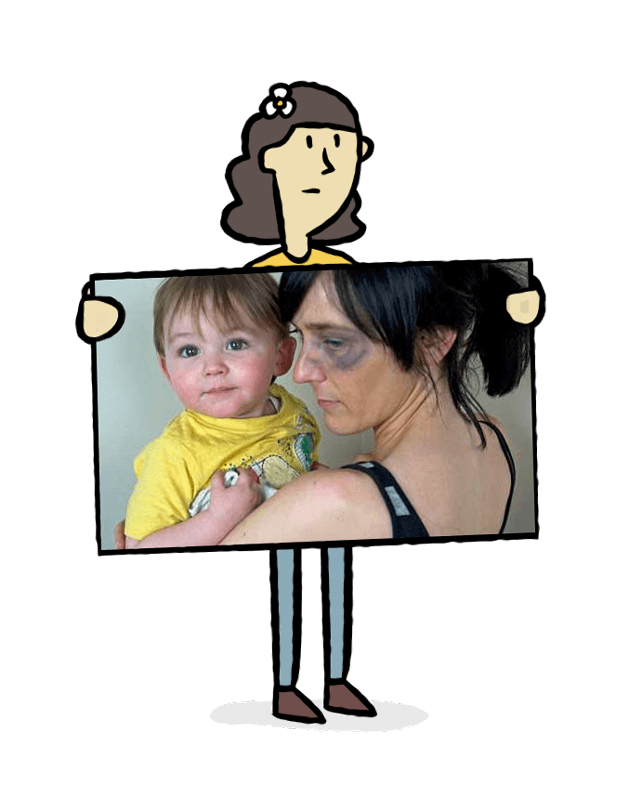What Is Domestic Abuse?
In this article, we answer the question to ‘what is domestic abuse?’ Domestic abuse is a relationship where one person exerts power and control over another. It is usually by a partner or an ex-partner but can also be other family members. This can happen to anyone, regardless of gender, age, race, religion or sexual orientation. Domestic abuse is not just violence, though in some cases it is involved. Domestic abuse is about power and control over another person.

Image posed by models.
There are many forms of abuse that can be used to exercise control. These include mental abuse, emotional abuse, financial abuse, physical abuse and sexual abuse. Signs of an abusive relationship may well be hard to see at first and may grow over time. Many victims may not even be aware that they are being abused. Due to the psychological control involved, it can be very confusing. It might not be until the relationship ends that the victim sees the power their partner had over their life.
Domestic abuse relationships do not just affect the adults involved but the whole family. It can have a serious impact on children living in the family. Children may also learn that this is how relationships are and struggle in the future to have a healthy relationship.
However, it is possible to break the cycle of abuse. Key to this is recognising the signs.
Indicators of Domestic Abuse to Look Out For
In an abusive relationship, the abuser will maintain control through a combination of forms of abuse, such as:
- Emotional abuse, including bullying, stalking and harassment
- Financial abuse
- Physical abuse, causing bodily harm or injury
- Sexual abuse
- Isolation, such as cutting off access to loved ones
All such behaviours aim to control and dominate. In all instances, abuse is never the fault of the victim but always the choice of the abuser.
Indicators of domestic abuse can be difficult to spot when a relationship begins and because of the psychological control involved, can be hard to recognise by the victim as the relationship develops. Perpetrators may also demonstrate loving behaviour as well as abusive which can make victims believe that they have changed. Here are some things to look out for though:
Emotional Abuse Signs
A person using emotional abuse may bully, intimidate, shout and threaten. They might cry, sulk or harass you. They might threaten to kill themselves or report you to Social Care if you leave them. The person might turn the children, family or friends against you. They might display controlling and stalking behaviour. They may blame stress, work, drugs or other things for their treatment of you and deny any abuse. The person might keep you awake at night. Emotional abuse can also include verbal abuse such as insulting you and calling you names, putting you down in front of others, saying you are stupid or ugly for example. Emotional abuse can damage your confidence and self esteem, making it difficult to leave the relationship and causing you to believe that the abuse is your fault.
Financial Abuse Signs
A partner using financial abuse may limit your access to money. They may insist on controlling the money and not give you enough money to live on. The partner may take away your property. They may stop you working.
Physical Abuse Signs
Signs of a violent relationship include kicking, punching, slapping, hitting, choking, biting, scalding, pinching, rape and shoving. Throwing objects, being poisoned, being threatened with the use of weapons and violence towards others are also types of physical abuse. Pregnancy can be a particularly dangerous time.
Sexual Abuse Signs
Rape, being forced to take part in degrading sexual behaviour, being forced to do anything that you are not comfortable with and being made to have sex with others are all signs of sexual abuse.
Isolation
Perpetrators often use isolation as a tactic. They may move their partner away from loved ones or discourage them from seeing people. They may make them doubt their friendships or turn their friends against them. The perpetrator may seduce friends or family. They may prevent their partner from leaving the house. They may stop them working or make it difficult for them to work.
Signs of a Healthy Relationship
If you are in an abusive relationship, it can hard to recognise whether the relationship is a healthy one. A useful way to examine a relationship is to look at how it feels. The Pattern Changing Programme explains this as follows:
“In a healthy relationship both parties are equal and neither is in a position of control. They are best friends… Each makes the other feel their best, supported, accepted, appreciated and loved.”
Home-Start Central Bedfordshire has run Pattern Changing for several years and seen many lives transformed. The programme provides tools to help female victims recover from the effects of domestic abuse relationships whilst regaining their confidence and self-esteem. It helps victims to see signs of an abusive relationship, avoiding such relationships in the future.
Our local charity believes that everyone deserves a life free from domestic abuse. This is why we provide support to both victims dealing with abuse and survivors. As well as Pattern Changing, Home-Start supports women with children in Refuges and leaving Refuge or after leaving a relationship.
There are other services available in Bedfordshire if you are in a relationship or need advice. Please follow at this link: https://bedsdv.org.uk/get-help/
If you are experiencing domestic violence please contact the 24 hour National Domestic Violence helpline in confidence at 0808 2000 247.
For more information on Home-Start Central Bedfordshire’s work involving domestic abuse, please follow the link below.
